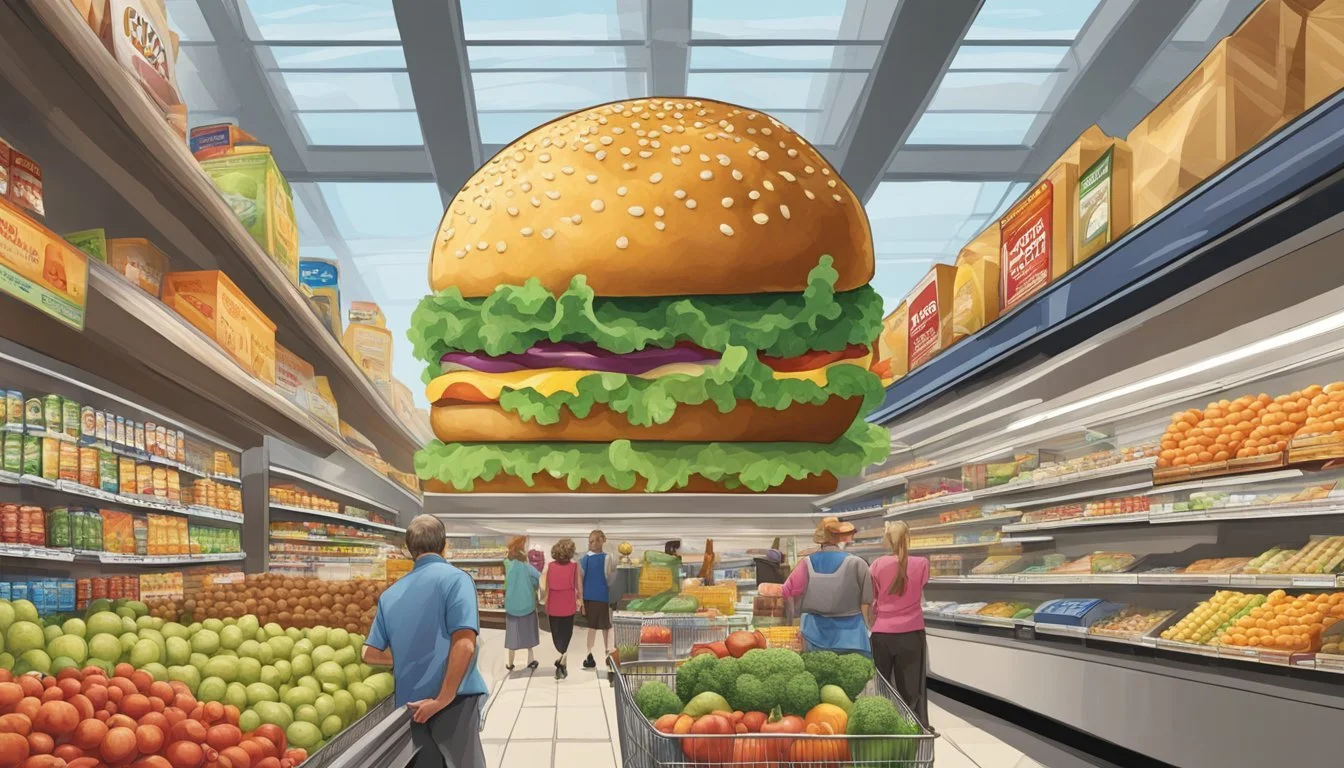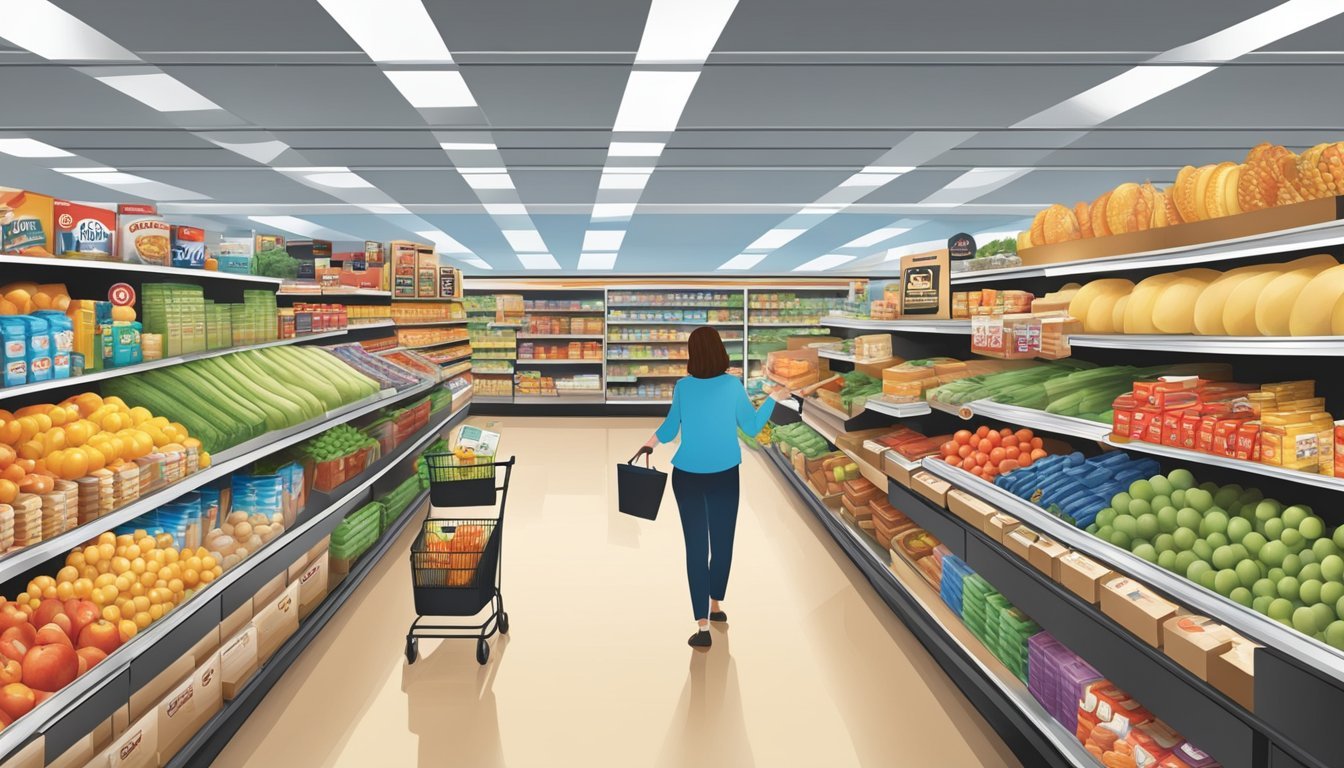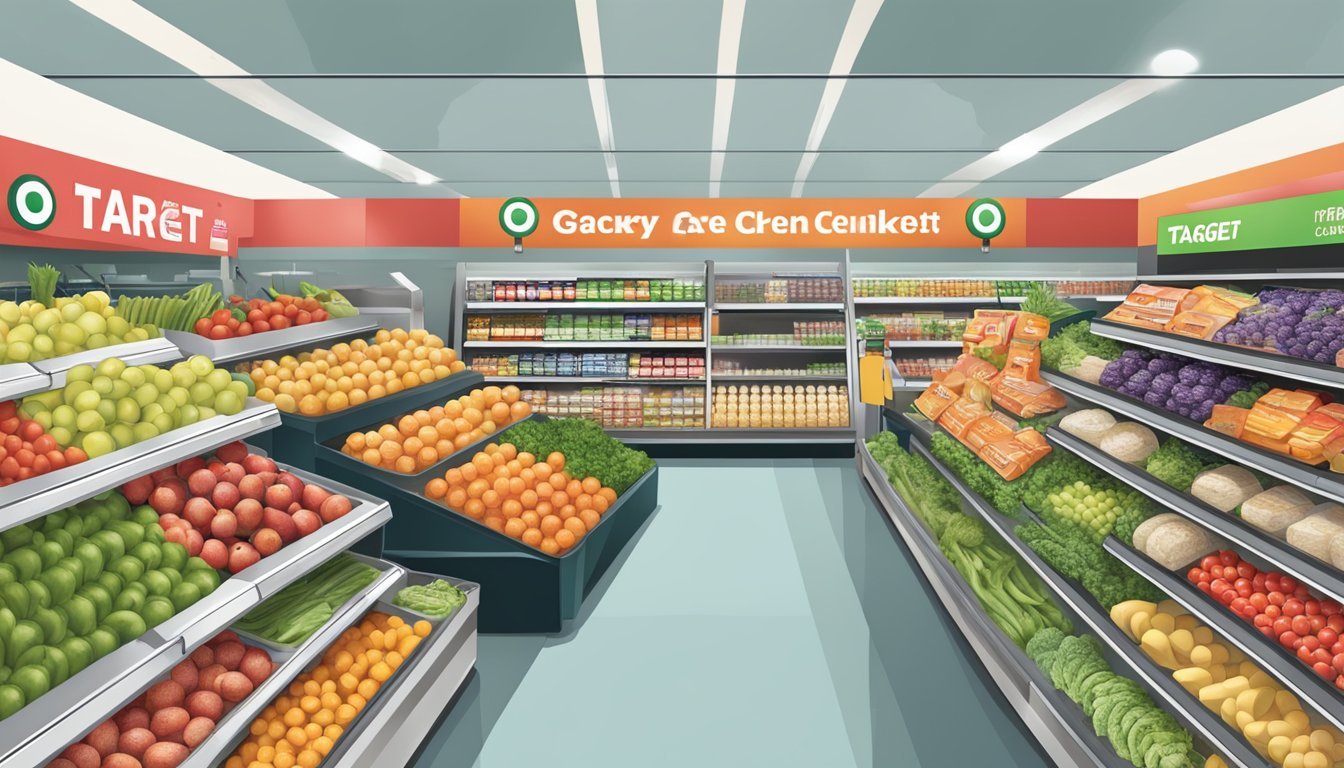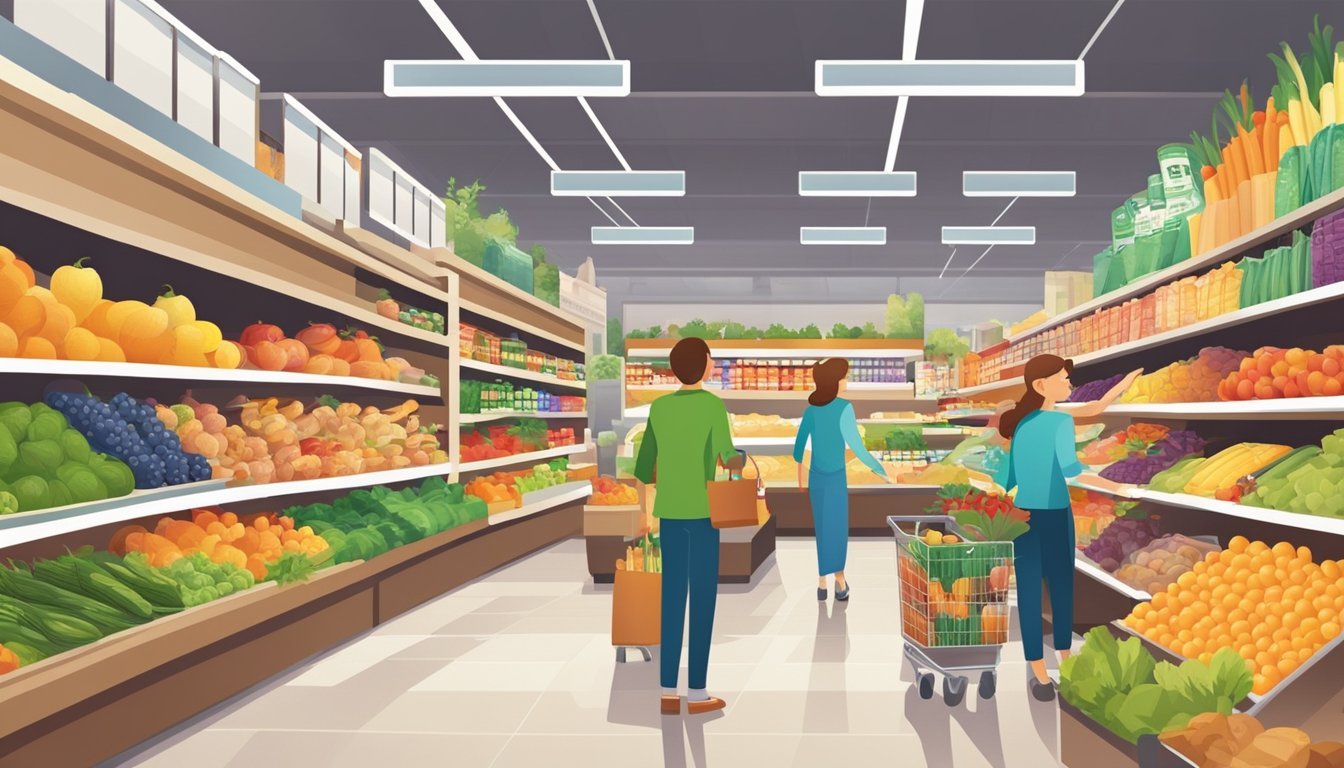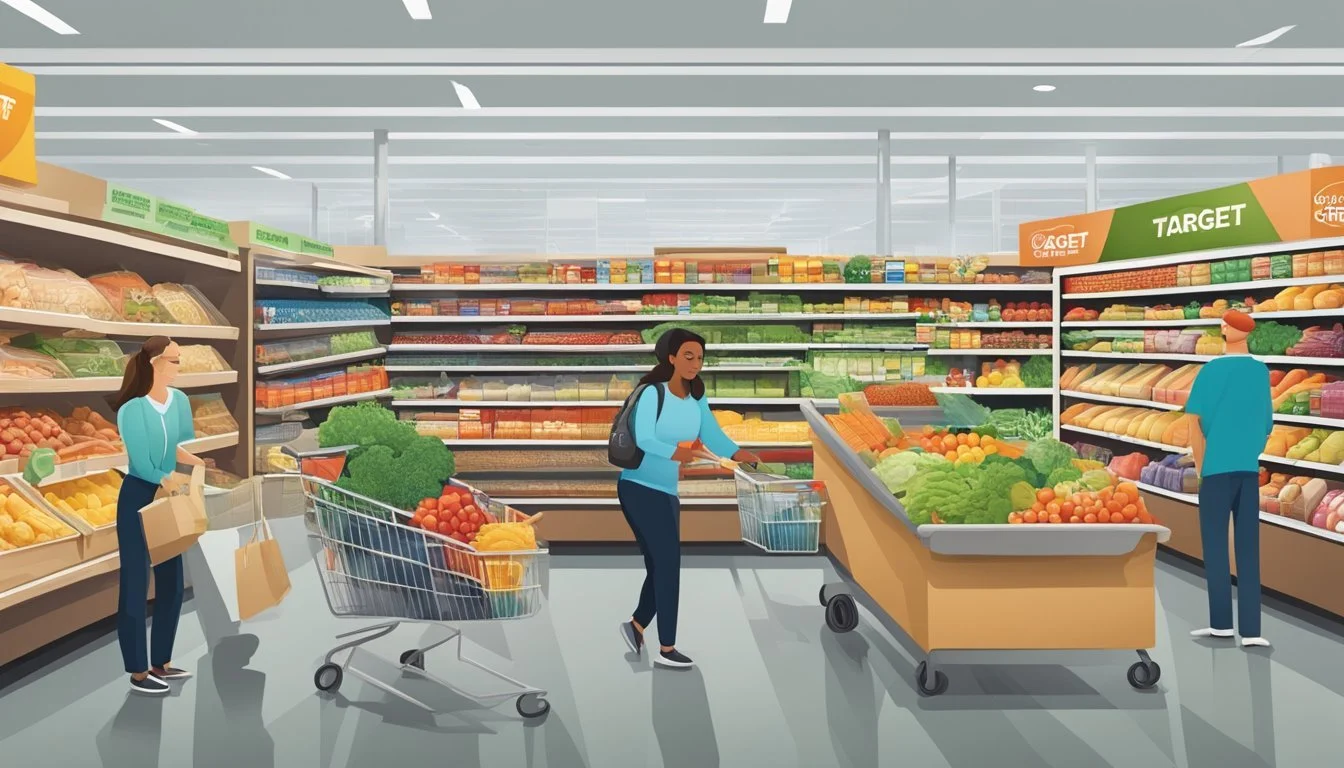Target vs Giant Food
A Comprehensive Comparison of Price, Quality, and Selection
Target and Giant Food are two popular grocery store chains that cater to different shopper preferences. While Target offers a diverse range of products beyond groceries, Giant Food focuses primarily on supermarket essentials.
For overall value and pricing, Target generally edges out Giant Food with competitive prices on many grocery items. Target's wider product selection also allows shoppers to combine grocery runs with other household shopping needs. However, Giant Food often provides a more traditional supermarket experience with larger produce sections and in-store bakeries.
The choice between Target and Giant Food ultimately depends on individual priorities. Shoppers seeking convenience and variety may prefer Target, while those looking for a dedicated grocery store with a fuller range of fresh foods might lean towards Giant Food. Both chains strive to offer quality products and positive shopping experiences to meet diverse customer needs.
Company Profiles
Target and Giant Food are two major players in the grocery retail space, each with their own unique offerings and strengths. These companies have built distinct brand identities and customer bases over the years.
Target Overview
Target is a well-known retail giant that offers a wide range of products, including groceries. The company operates over 1,800 stores across the United States. Target's grocery section typically includes fresh produce, meats, dairy, and pantry staples.
Target's store brands, such as Good & Gather and Market Pantry, provide affordable options for budget-conscious shoppers. The retailer also offers organic and natural products to cater to health-conscious consumers.
Target's grocery delivery options include same-day delivery through Shipt and in-store pickup services. The company has invested heavily in its digital capabilities to enhance the shopping experience for customers.
Giant Food Overview
Giant Food is a regional supermarket chain primarily operating in the Mid-Atlantic region of the United States. The company has over 160 stores and focuses solely on grocery and pharmacy services.
Giant Food offers a comprehensive selection of fresh produce, meats, seafood, and bakery items. The retailer has a strong emphasis on local sourcing and partnerships with regional farmers.
Giant's store brands, such as Nature's Promise and Taste of Inspirations, provide high-quality alternatives to national brands. The company has also expanded its organic produce offerings to meet growing consumer demand.
Giant Food has developed a loyal following through its Gas Rewards program and digital coupons. The retailer offers grocery delivery and pickup services to provide convenience for its customers.
Location and Convenience
Target and Giant Food differ in their store locations and shopping convenience. These factors can significantly impact the overall grocery shopping experience for customers.
Store Proximity
Target operates over 1,800 stores across the United States, with locations in all 50 states. Many Target stores are situated in suburban areas and shopping centers, making them accessible to a large portion of the population.
Giant Food has a more limited presence, with approximately 160 stores primarily concentrated in the Mid-Atlantic region. Their stores are found in Maryland, Virginia, Delaware, and Washington D.C.
Target's wider distribution gives it an edge in terms of accessibility for many shoppers. However, Giant Food's focused regional presence can benefit customers in its service areas.
Shopping Convenience
Target stores typically feature spacious layouts with wide aisles, making navigation easier for shoppers. Many locations offer grocery pickup and same-day delivery services, enhancing convenience for busy customers.
Giant Food stores vary in size but generally provide a traditional supermarket layout. They offer online ordering and curbside pickup at select locations, catering to customers who prefer to avoid in-store shopping.
Target's integration of groceries within its general merchandise stores allows for one-stop shopping. This can save time for customers needing to purchase both food and non-food items.
Giant Food, as a dedicated grocery chain, often provides a more comprehensive selection of food products. This specialization can streamline the grocery shopping process for customers focused solely on food purchases.
Product Range and Quality
Target and Giant Food both offer extensive selections of groceries, though their strengths differ in key departments. Each store provides unique options that cater to various customer preferences and dietary needs.
Fresh Produce
Target's produce section features a curated selection of fruits and vegetables. The retailer focuses on popular staples and seasonal items. Their organic offerings have expanded in recent years, with the Good & Gather brand providing affordable organic choices.
Giant Food boasts a larger produce department with a wider variety of conventional and organic options. Their stores often carry local and regional produce when in season. Giant's produce quality is generally consistent, with regular rotations to ensure freshness.
Both chains implement quality control measures, but Giant Food typically edges out Target in overall produce freshness and selection breadth.
Meat and Dairy
Target's meat department offers pre-packaged options and some fresh-cut meats. Their selection is adequate for basic needs but may lack specialty cuts. The dairy section includes major brands and Target's own Good & Gather line.
Giant Food provides a more comprehensive meat selection, including a full-service butcher counter in many locations. Their meat quality is generally high, with options ranging from budget-friendly to premium cuts. Giant's dairy department is extensive, featuring local and national brands alongside their own store brand.
Both stores stock organic and grass-fed options, but Giant Food typically offers a broader range of choices in both meat and dairy categories.
Bakery and Deli
Target's bakery offerings are primarily limited to pre-packaged items and a small selection of fresh-baked goods. Their deli section focuses on packaged meats and cheeses, with some locations offering a limited range of prepared foods.
Giant Food features full-service bakery and deli departments in most stores. Fresh-baked breads, cakes, and pastries are available daily. The deli offers a variety of sliced meats and cheeses, as well as prepared foods and meal solutions.
Giant Food's bakery and deli departments are more comprehensive, providing a wider range of freshly made products and custom options compared to Target's more limited selections.
Price and Value
Target and Giant Food employ different pricing strategies and offer various ways for customers to save money on groceries. Both stores aim to provide value, but their approaches differ in key areas.
Comparing Prices
Target generally offers competitive prices on groceries, especially for their store brand items. Their Market Pantry and Good & Gather lines often provide quality products at lower price points than national brands. Giant Food's prices tend to be slightly higher on average, but they frequently run sales on popular items.
A typical grocery basket at Target might cost 5-10% less than at Giant Food for equivalent items. However, prices can vary significantly depending on location and current promotions. Target's focus on efficiency and streamlined operations allows them to keep prices lower on many staple items.
Sales and Discounts
Giant Food runs weekly circulars with numerous sale items, often featuring buy-one-get-one deals on perishables and pantry staples. Their sales can offer significant savings for shoppers who plan their purchases around these promotions.
Target's discount strategy differs, focusing more on everyday low prices and periodic category-wide sales. They offer a "Deal of the Day" in their grocery section and use their Target Circle program to provide personalized offers to shoppers.
Both stores mark down perishable items as they near expiration dates, providing opportunities for additional savings.
Loyalty and Savings Programs
Target's free Target Circle program allows customers to earn 1% back on purchases and access exclusive offers. The Target RedCard credit or debit card provides an additional 5% discount on most purchases, including groceries.
Giant Food's loyalty program, Giant Flexible Rewards, lets shoppers earn points on purchases to redeem for grocery discounts or gas savings. They also offer digital coupons through their app and website.
Both programs are free to join and can lead to substantial savings for regular shoppers. Target's program is more straightforward, while Giant Food's offers more flexibility in how rewards are used.
Customer Experience and Service
Target and Giant Food prioritize customer satisfaction through distinct approaches to store environment and service quality. These factors significantly impact the overall shopping experience.
Store Cleanliness and Layout
Target stores are known for their bright, open layouts with wide aisles and clear signage. The retailer maintains a clean, organized atmosphere that makes navigation easy. Target's design emphasizes a modern, streamlined look with strategically placed displays.
Giant Food stores typically have a more traditional grocery layout. While clean, they may not always match Target's polished appearance. Giant Food focuses on practical organization, grouping similar items together for convenience.
Both chains regularly clean high-touch areas and maintain tidy shelves. Target often receives praise for its aesthetically pleasing presentation, while Giant Food aims for a functional, no-frills shopping environment.
Customer Service Quality
Target invests heavily in employee training, emphasizing a friendly, helpful approach. Staff members are generally knowledgeable about product locations and can assist with various inquiries. The retailer's focus on customer service contributes to a positive shopping experience.
Giant Food's service quality can vary by location but generally meets customer expectations. Employees are trained to be courteous and efficient, particularly at checkout lanes. The chain places importance on product knowledge, especially in specialized departments like deli and produce.
Both retailers offer self-checkout options to reduce wait times. Target's mobile app enhances the shopping experience with features like in-store item locators. Giant Food provides personalized savings through its loyalty program, improving customer satisfaction.
Market Position and Competition
Target and Giant Food occupy distinct positions in the competitive grocery retail landscape. Each chain faces unique challenges and opportunities as they vie for market share against major players like Walmart and Amazon.
Competitors Analysis
Target competes with a diverse array of retailers due to its wide product range. In the grocery sector, it faces stiff competition from Walmart, which offers lower prices on many items. A recent analysis found Walmart's grocery prices were 16% below the average, making it a formidable rival.
Target also contends with traditional supermarkets, convenience stores, and online retailers like Amazon. Its strategy focuses on offering a curated selection of groceries alongside other merchandise, appealing to shoppers seeking convenience and variety in one location.
Giant Food primarily competes with other regional supermarket chains and national players like Whole Foods. It emphasizes quality and customer service to differentiate itself from discount retailers.
Consumer Perceptions
Surveys indicate that Target enjoys a positive reputation among consumers for its clean stores and trendy private-label brands. Many shoppers appreciate the "Tar-zhay" experience, viewing it as a step up from discount chains.
Giant Food is often perceived as a reliable neighborhood grocer with strong community ties. Consumers tend to rate it highly for product quality and fresh produce.
Price-conscious shoppers may favor Walmart or Aldi for groceries, while those prioritizing organic options might choose Whole Foods. Target and Giant Food aim to strike a balance, appealing to middle-market consumers seeking value without sacrificing quality.
Additional Services
Target and Giant Food offer a range of services beyond traditional grocery shopping. These include convenient delivery options and exclusive product lines that cater to diverse customer needs.
Grocery Delivery and Pick-up
Target partners with Shipt for same-day delivery, offering groceries and other items directly to customers' homes. The service is available for a membership fee or per-order charge.
Giant Food provides its own delivery service in select areas. Customers can choose delivery time slots and receive their groceries within hours.
Both stores offer curbside pickup options. Target's Drive Up service allows shoppers to place orders via the app and have items brought to their car. Giant Food's pickup service operates similarly, with designated parking spots for order collection.
Exclusive Products and Collaborations
Target is known for its extensive lineup of private-label brands. Good & Gather offers high-quality groceries, while Market Pantry provides budget-friendly options.
The retailer frequently collaborates with designers and brands for limited-edition collections. These partnerships often extend to food and beverage items, creating unique offerings.
Giant Food focuses on its store brands like Nature's Promise for organic and natural products. The chain also offers a selection of local and regional items, supporting small businesses and appealing to customers seeking community-focused options.
Both stores feature pharmacy services and exclusive health and wellness product lines.

